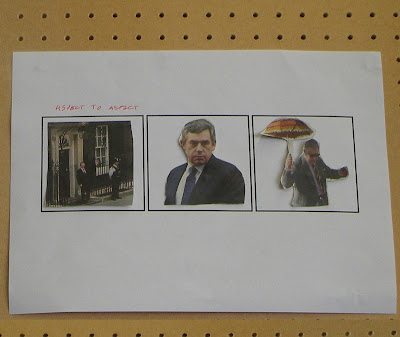Last friday I attended to the narrative workshop at LCC.
Directed by David Sims, the workshop covers basic topics on visual narrative.
It is that kind of "MUST KNOW" session, in which you remind how simple tools can positively effect your work.
The way we crop an image can alter the viewer's reading of that image and can produce a completely different ( or simply stronger) visual narrative.
MAIN TOPICS:
Cropping, editing, selecting, zooming in and out. Changing the format of the image.
Cropping is an essential part of the graphic
designer job. An important point in cropping
is to clearly establish what the image is
going to be about about.
going to be about about.
Creativity is allowed !
No limitations in the ways we
should or should not crop in order to achieve
the best results.
should or should not crop in order to achieve
the best results.
How does this practice influences the
designers work ?
- shifting the attention from the whole
to precise point of view, cropping
practice can led to new ideas on the
subject we are working on.
practice can led to new ideas on the
subject we are working on.
- It can save you a lot of time spent on
trials to take the perfect shot.
trials to take the perfect shot.
- Cropping is not only necessary to the
narrative purposes, it can also help to
achieve diverse results on matters
like rhythm, dynamism,
like rhythm, dynamism,
lightness and shape.
I find interesting that as I look for inspirational pieces of work like this beautiful poster
from the Berlin based studio : ICECREAMFORFREE, I can see how
images can, when cropped out of their original frames , be utilised in diverse contexts
allowing creative minds to grow and develop their work with little or non limitations.
http://www.iconeye.com/
It is anyway vital to remember that cropping is able to deliver
great results on its own. Working with constrictive timetables, designers are often required
to give almost immediate response to the client in order to meet the deadlines and it is therefore handy
to be capable of handling the most hostile situations.
It is anyway vital to remember that cropping is able to deliver
great results on its own. Working with constrictive timetables, designers are often required
to give almost immediate response to the client in order to meet the deadlines and it is therefore handy
to be capable of handling the most hostile situations.
MORNING SESSION:
During the first part of the morning session, we were required to explore on the topic
( cropping to enhance meaning) selecting 9 images from a set we
were required to crop the frames in order to achieve the following :
1 close up in detail
2 Wide angle horizontal
3 narrow angle vertical
4 crop to abstract
5 crop to define
6 crop to enhance the
emotional impact
7 Narrow vertical
8 Bold exciting
9 Discree
The second part of the morning lesson focused on (visual narrative through transitions).
To approach the topic students were given
the task of reproducing 2 transition from a set of 6 choices:
-Moment to moment
-Action to action
-Subject.to.subject
-Scene to scene
-Aspect to aspect
-Non sequitor
Using daily newspapers as source for visual materials, students had to
cut down images and to re-assemble them into a 3 pictures sequence.
These exercise is very effective to generate meaning if executed with
random imagery coz it allows you to create a number of concepts
which is wider then in a ready made storyboard.
Originated as a natural consequence of literal narrative,
visual narrative is to be considered essential in order to build a more
dynamic communication.
This practice is particularly
utilised in adverts where there is the need to convey complex concepts
in a very short amount of time,
It is important to understand that in now-days visual communications
works such as storyboards, comics and visual novels, deductive reading
is often required to fully grasp the passages of the stories.
More elements, then in literal narrative, can be simultaneously inserts
in the transitions,but it requires a considerable amount of time to become
familiar and adequately precise on the selection of subjects and stylistic
cut ( images cropping included ).
Scene to scene + Action to action
Aspect to Aspect











No comments:
Post a Comment